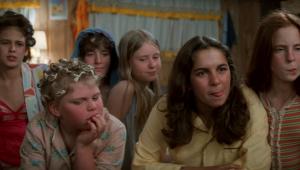the article speaks about the 4 eq's graphs... i don't see them.
Test Report: Bowers & Wilkins MT-60D Home Theater Speaker System Page 2
Setup
I decided to place the M1 satellites on speaker stands close to the walls of my listening room, which would give an acoustical effect similar to wall-mounting. I attached the left, right, and surround speakers vertically to the included bases, and swiveled the center speaker so that it would sit horizontally. The B&W logo on the front turns, so it’s upright no matter which way you orient the speaker.
Even with my big fingers, using the concealed binding posts was easy — just pull off a rubber cover on the bottom of the speaker’s base, slip the wires through their holes, and snap them into the spring-loaded posts.
I fed the PV1D signals from the subwoofer output of my Denon receiver, letting the receiver handle the subwoofer crossover duties for me. After some experimenting with action movies, I settled on a crossover point of 120 Hz. This made certain male voices sound slightly bloated because more of their sound was coming from the sub. However, the 100-Hz and 110-Hz crossover points didn’t sound as good because they made the M1s distort a little more. Of the PV1D’s different room EQ modes, EQ1 — the flat one — worked the best for my taste.
Performance
After breaking the B&W MT-60D system in with pink noise for several hours, I reached for a classic LP: Trio Music by Chick Corea, Miroslav Vitous, and Roy Haynes. Trio Music was recorded for ECM, a label famous for its spacious, ethereal production. My favorite track, “Trio Improvisation 4,” sounded absolutely colossal and hugely reverberant through the MT-60D system, more like what I’d expect to hear from big electrostatic speakers. Roy Haynes’s drums in particular sounded as if they were echoing off corners 25 feet above my head.
The secret has to be mostly in that Nautilus tweeter, ’cause it’s the high frequencies that shone brightest. My all-time-favorite testing track, Holly Cole’s “Train Song” (from Temptation), gave an even better sense of the tweeter’s awesomeness. Not only could I hear every detail in the track’s swooping, swirling percussion instruments, but I could get a sense of how far away each one was from me. (I know they probably faked all that in the studio using digital reverb, but still.)
That 4-inch midwoofer on the M1 really has a way with voices, capturing the romantic tone of Cole’s alto as easily as it conveyed the libidinous wail of Robert Plant’s tenor on Led Zeppelin’s “The Ocean” (from Houses of the Holy), even when I had the system cranked to 99 dB average SPL at my listening position. The only voice on which it felt a tad off was Donald Fagen’s, which sounded slightly reedier than normal when I listened to Steely Dan’s “Black Cow” (from Aja). That gave me the idea that the tweeter level was perhaps a half-decibel high, but I banished that thought, knowing such a change might take away some of the system’s magic.
- Log in or register to post comments



































































